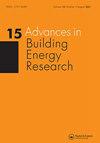The effect of VOC and environmental parameters on ozone sensors performance
IF 2.5
Q2 CONSTRUCTION & BUILDING TECHNOLOGY
引用次数: 2
Abstract
ABSTRACT Accurate measurement of ozone concentration, especially in workplaces is a crucial component of managing indoor air quality and protecting workers’ and building occupants’ health and safety. Some factors such as gaseous pollutants (like volatile organic compounds (VOCs)), relative humidity, and air velocity and direction could interfere with monitor readings. This study examined the impact of these environmental factors on the responses of six commercial ozone monitors: three UV photometry, two electrochemical and one semiconductor metal oxide. The results demonstrated that environmental physical parameters (i.e. air velocity and relative humidity) often slightly affected UV instrument’s performance, while significant effects were seen in electrochemical and semiconductor monitors. Furthermore, chemical parameters (only VOCs including ethanol, acetone and toluene) had more influence on UV ozone monitors than those using electrochemical and metal oxide techniques.VOC和环境参数对臭氧传感器性能的影响
摘要准确测量臭氧浓度,尤其是在工作场所,是管理室内空气质量、保护工人和建筑物居住者健康和安全的重要组成部分。一些因素,如气体污染物(如挥发性有机化合物)、相对湿度、空气速度和方向,可能会干扰监测器的读数。这项研究考察了这些环境因素对六台商用臭氧监测仪响应的影响:三台紫外线光度计、两台电化学监测仪和一台半导体金属氧化物监测仪。结果表明,环境物理参数(即空气速度和相对湿度)通常对紫外线仪器的性能有轻微影响,而在电化学和半导体显示器中则有显著影响。此外,化学参数(仅包括乙醇、丙酮和甲苯在内的挥发性有机物)对紫外线臭氧监测仪的影响大于使用电化学和金属氧化物技术的参数。
本文章由计算机程序翻译,如有差异,请以英文原文为准。
求助全文
约1分钟内获得全文
求助全文
来源期刊

Advances in Building Energy Research
CONSTRUCTION & BUILDING TECHNOLOGY-
CiteScore
4.80
自引率
5.00%
发文量
11
 求助内容:
求助内容: 应助结果提醒方式:
应助结果提醒方式:


